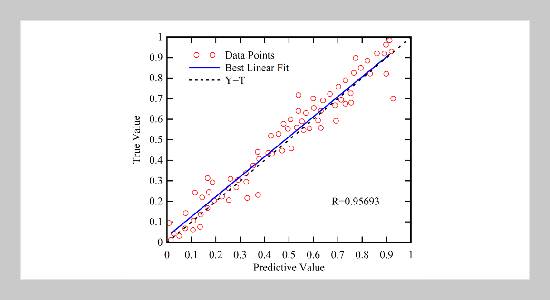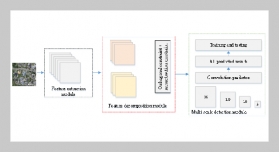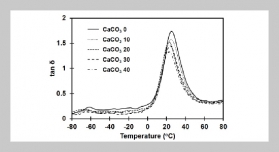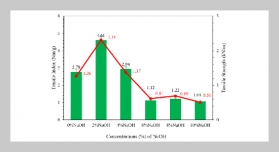- [1] S. Karim, A. Qadir, U. Farooq, M. Shakir, and A. Laghari, (2022) “Hyperspectral Imaging: A Review and Trends towards Medical Imaging" Current Medical Imaging:
- [2] E. Eslami, (2022) “Analytical Study of Deep Learning Methods for Road Condition Assessment":
- [3] E. Eslami and H.-B. Yun, (2022) “Improvement of Multiclass Classification of Pavement Objects Using Intensity and Range Images" Journal of Advanced Transportation:
- [4] E. Eslami and H.-B. Yun, (2021) “Attention-based multiscale convolutional neural network (A+ MCNN) for multi-class classification in road images" Sensors 21(15):5137.
- [5] L. Wang, Y. Shoulin, H. Alyami, A. Laghari, M. Rashid, J. Almotiri, H. Alyamani, and F. Alturise, (2022) “A novel deep learning-based single shot multibox detector model for object detection in optical remote sensing images":
- [6] A. Laghari, H. He, M. Shafiq, and A. Khan, (2018) “Assessment of quality of experience (QoE) of image compression in social cloud computing" Multiagent and Grid Systems 14(2): 125–143.
- [7] A. Laghari and S. Yin, (2022) “How to Collect and Interpret Medical Pictures Captured in Highly Challenging Environments that Range from Nanoscale to Hyperspectral Imaging" Current Medical Imaging:
- [8] Z.-M. Wang, J.-W. Zhang, Y. He, and J. Zhang, (2022) “EEG emotion recognition using multichannel weighted multiscale permutation entropy" Applied Intelligence 52(10): 12064–12076.
- [9] N. S. Suhaimi, J. Mountstephens, and J. Teo, (2022) “A dataset for emotion recognition using virtual reality and EEG (DER-VREEG): emotional state classification using low-cost wearable VR-EEG headsets" Big Data and Cognitive Computing 6(1): 16.
- [10] M. M. Hassan, K. T. Hasan, I. A. Tonoy, M. M. Rahman, and M. A. B. Abedin. “Student Attention Base Facial Emotion State Recognition Using Convolutional Neural Network”. In: Proceedings of International Conference on Data Science and Applications:
ICDSA 2022, Volume 1. Springer, 2023.
- [11] G. Li, D. Ouyang, Y. Yuan, W. Li, Z. Guo, X. Qu, and P. Green, (2022) “An EEG data processing approach for emotion recognition" IEEE Sensors Journal 22(11): 10751–10763.
- [12] T. Tuncer, S. Dogan, M. Baygin, and U. R. Acharya,(2022) “Tetromino pattern based accurate EEG emotion classification model" Artificial Intelligence in Medicine 123: 102210.
- [13] X. Li, Y. Zhang, P. Tiwari, D. Song, B. Hu, M. Yang, Z. Zhao, N. Kumar, and P. Marttinen, (2022) “EEG based emotion recognition: A tutorial and review" ACM Computing Surveys 55(4): 1–57.
- [14] Z. Xie, J. Pan, S. Li, J. Ren, S. Qian, Y. Ye, and W. Bao, (2022) “Musical Emotions Recognition Using Entropy Features and Channel Optimization Based on EEG" Entropy 24(12): 1735.
- [15] M. Chernykh, B. Vodianyk, I. Seleznov, D. Harmatiuk, I. Zyma, A. Popov, and K. Kiyono, (2022)“Detrending Moving Average, Power Spectral Density, and Coherence: Three EEG-Based Methods to Assess Emotion Irradiation during Facial Perception" Applied Sciences 12(15): 7849.
- [16] O. Almanza-Conejo, D. L. Almanza-Ojeda, J. L. Contreras-Hernandez, and M. A. Ibarra-Manzano, (2023) “Emotion recognition in EEG signals using the continuous wavelet transform and CNNs" Neural Computing and Applications 35(2): 1409–1422.
- [17] F. Zheng, B. Hu, X. Zheng, C. Ji, J. Bian, and X. Yu, (2022) “Dynamic differential entropy and brain connectivity features based EEG emotion recognition" International Journal of Intelligent Systems:
- [18] V. Kanuboyina, T. Shankar, and R. Penmetsa, (2022) “Electroencephalography based human emotion state classification using principal component analysis and artificial neural network" Multiagent and Grid Systems 18(3-4): 263–278.
- [19] Q. Li, Y. Liu, Y. Shang, Q. Zhang, and F. Yan, (2022) “Deep Sparse Autoencoder and Recursive Neural Network for EEG Emotion Recognition" Entropy 24(9): 1187.
- [20] X. Li, D. Song, P. Zhang, G. Yu, Y. Hou, and B. Hu. “Emotion recognition from multichannel EEG data through convolutional recurrent neural network”. In: 2016 IEEE International Conference on Bioinformatics and Biomedicine (BIBM). IEEE. 2016, 352–357.
- [21] M. Yu, S. Xiao, M. Hua, H. Wang, X. Chen, F. Tian, and Y. Li, (2022) “EEG-based emotion recognition in an immersive virtual reality environment: From local activity to brain network features" Biomedical Signal Processingand Control 72: 103349.
- [22] A. Topic, M. Russo, M. Stella, and M. Saric, (2022) “Emotion Recognition Using a Reduced Set of EEG Channels Based on Holographic Feature Maps" Sensors (Basel) 22(9): 3248.
- [23] M. Malathi, G. A. A. Mary, J. Kumar, P. Sinthia, and M. Nalini. “An estimation of PCA feature extraction in EEG-based emotion prediction with support vector machines”. In: Proceedings of Data Analytics and Management: ICDAM 2021, Volume 1. Springer. 2022,
1–7.
- [24] A. D.Wibawa, B. S. Y. Mohammad, M. A. K. Fata, F. A. Nuraini, A. Prasetyo, and Y. Pamungkas. “Comparisonof EEG-Based Biometrics System Using Naive Bayes, Neural Network, and Support Vector Machine”. In: 2022 International Conference on Electrical and Information Technology (IEIT). IEEE. 2022, 1–6.
- [25] Y. Wang, S. Qiu, D. Li, C. Du, B.-L. Lu, and H. He, (2022) “Multi-modal domain adaptation variational autoencoder for eeg-based emotion recognition" IEEE/CAA Journal of Automatica Sinica 9(9): 1612–1626.
- [26] Ł. Furman,W. Duch, L. Minati, and K. Tołpa, (2023) “Short-time Fourier transform and embedding method for recurrence quantification analysis of EEG time series" The European Physical Journal Special Topics 232(1): 135–149.
- [27] E. Hancer and A. Subasi, (2022) “EEG-based emotion recognition using dual tree complex wavelet transform and random subspace ensemble classifier" Computer Methods in Biomechanics and Biomedical Engineering: 1–13.
- [28] B.-D. Barkana, Y. Ozkan, and J. A. Badara, (2022) “Analysis of working memory from EEG signals under different emotional states" Biomedical Signal Processing and Control 71: 103249.
- [29] S. Karim, Y. Zhang, S. Yin, A. A. Laghari, and A. A. Brohi, (2019) “Impact of compressed and down-scaledtraining images on vehicle detection in remote sensing imagery" Multimedia Tools and Applications 78: 32565–32583.
- [30] S. Karim, Y. Zhang, A. A. Laghari, and A. Memon. “Image processing based proposed drone for detecting and controlling street crimes.” In: 2017 IEEE International Conference on Communication Technology
(ICCT). IEEE. 2017, 1–5.
- [31] S. Karim, H. He, A. A. Laghari, A. H. Magsi, and R. A. Laghari, (2021) “Quality of service (QoS): measurements of image formats in social cloud computing" Multimedia Tools and Applications 80(23): 4507–4532.
- [32] M. Norouzi, M. Hashemi, and Z. Pouri, (2021) “The Question of Global Society in Post-Corona Time: Towards a Paradigm Shift" International Journal of CommunityWell-Being 4(3): 339–343.
- [33] N. Farsaeivahid, C. Grenier, S. Nazarian, and M. L. Wang, (2022) “A Rapid Label-Free Disposable Electrochemical Salivary Point-of-Care Sensor for SARS-CoV-2 Detection and Quantification" Sensors 23(1): 433.
- [34] F. Salahshour, M.-M. Mehrabinejad, M. N. Toosi, M. Gity, H. Ghanaati, M. Shakiba, S. Nosrat Sheybani, H. Komaki, and S. Kolahi, (2021) “Clinical and chest CT features as a predictive tool for COVID-19 clinical progress: introducing a novel semi-quantitative scoring
system" European radiology 31: 5178–5188.
- [35] R. Rezapour-Nasrabad, (2021) “Feasibility of providing Namaste managed care to the elderly with Alzheimer’s disease" Archivos Venezolanos de Farmacologia y Terapéutica 40(4): 455˘463.
- [36] F. Salahshour, M.-M. Mehrabinejad, A. Zare Dehnavi, A. Alibakhshi, H. Dashti, M.-A. Ataee, and N. Ayoobi Yazdi, (2020) “Pancreatic neuroendocrine tumors (pNETs): the predictive value of MDCT characteristics in the differentiation of histopathological grades" Abdominal
Radiology 45: 3155–3162.
- [37] B. Maas, E. Zabeh, and S. Arabshahi. “QuickTumor-Net: fast automatic multi-class segmentation of brain tumors”. In: 2021 10th International IEEE/EMBS Conference on Neural Engineering (NER). IEEE. 2021, 1–4.
- [38] E. Ghafourian, F. Samadifam, H. Fadavian, P. Jerfi Canatalay, A. Tajally, and S. Channumsin, (2023) “An Ensemble Model for the Diagnosis of Brain Tumors through MRIs" Diagnostics 13(3): 561.
- [39] A. Aggarwal, A. Srivastava, A. Agarwal, N. Chahal, D. Singh, A. A. Alnuaim, A. Alhadlaq, and H.-N. Lee, (2022) “Two-way feature extraction for speech emotion recognition using deep learning" Sensors 22(6): 2378.
- [40] A. Mert and A. Akan, (2018) “Emotion recognition from EEG signals by using multivariate empirical mode decomposition" Pattern Analysis and Applications 21: 81–89.
- [41] M. Chen, J. Han, L. Guo, J.Wang, and I. Patras. “Identifying valence and arousal levels via connectivity between EEG channels”. In: 2015 International Conference on Affective Computing and Intelligent Interaction (ACII). IEEE. 2015.
- [42] S. Jirayucharoensak, S. Pan-Ngum, and P. Israsena, (2014) “EEG-based emotion recognition using deep learning network with principal component based covariate shift adaptation" The ScientificWorld Journal 2014:
- [43] F. Bahari and A. Janghorbani. “EEG-based emotion recognition using recurrence plot analysis and k nearest neighbor classifier”. In: 2013 20th Iranian Conference on Biomedical Engineering (ICBME). IEEE. 2013.
- [44] P. Arnau-González, M. Arevalillo-Herráez, and N. Ramzan, (2017) “Fusing highly dimensional energy and connectivity features to identify affective states from EEG signals" Neurocomputing 244: 81–89.
- [45] Z. Liang, S. Oba, and S. Ishii, (2019) “An unsupervised EEG decoding system for human emotion recognition" Neural Networks 116: 257–268.
- [46] A. Olamat, P. Ozel, and S. Atasever, (2022) “Deep learning methods for multi-channel EEG-based emotion recognition" International Journal of Neural Systems 32(05): 2250021.
- [47] H. Cizmeci and C. Ozcan, (2023) “Enhanced deep capsule network for EEG-based emotion recognition" Signal, Image and Video Processing 17(2): 463–469.
- [48] S. Koelstra, C. Muhl, M. Soleymani, J.-S. Lee, A. Yazdani, T. Ebrahimi, T. Pun, A. Nijholt, and I. Patras, (2011) “DEAP: A database for emotion analysis; using physiological signals" IEEE transactions on affective computing 3(1): 18–31.
- [49] F. Sharbrough, (1991) “American Electroencephalographic Society guidelines for standard electrode position nomenclature" J clin Neurophysiol 8: 200–202.
- [50] R. Oostenveld and P. Praamstra, (2001) “The five percent electrode system for high-resolution EEG and ERP measurements" Clinical neurophysiology 112(4): 713–719.
- [51] D. Slayback, S. Abdali, J. Brooks,W. D. Hairston, and P. Groves. “Novel methods for eeg visualization and visualization”. In: 2018 IEEE International Symposium on Circuits and Systems (ISCAS). IEEE. 2018, 1–5.
- [52] M. D. Zeiler and R. Fergus. “Visualizing and understanding convolutional networks”. In: Computer Vision–ECCV 2014: 13th European Conference, Zurich, Switzerland, September 6-12, 2014, Proceedings, Part I. 13. Springer. 2014.
- [53] S. Wager, S. Wang, and P. S. Liang, (2013) “Dropout training as adaptive regularization" Advances in neural information processing systems 26: 45–67.
- [54] X. Glorot and Y. Bengio. “Understanding the difficulty of training deep feedforward neural networks”. In: Proceedings of the thirteenth international conference on artificial intelligence and statistics. 9. JMLR Workshop and Conference Proceedings. 2010, 249–256.
- [55] D. Naser and G. Saha. “Recognition of emotions induced by music videos using DT-CWPT”. In: 2013 Indian Conference on Medical Informatics and Telemedicine (ICMIT). IEEE. 2013, 1–5









